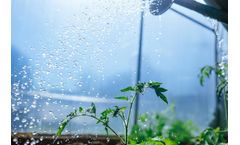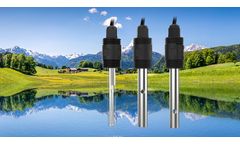Lead In Water Articles & Analysis
15 articles found
In today’s fast-paced world of greenhouse cultivation, the relevance of a dependable water system to this sector cannot be understated. Regarding plant life, there is a critical need for water. In a controlled greenhouse environment, an appropriate water system can spell all the difference between harvest glory and disappointing harvests. With the puroxi water treatment from puroxi TM Pure ...
By mapping variations in soil properties, farmers can tailor their management practices to optimize crop growth and resource use. Water Conservation: Monitoring soil moisture levels with sensors allows farmers to apply water precisely where and when it is needed, reducing water waste and energy consumption associated with irrigation. ...
ByJXCT
Traditional irrigation methods often rely on guesswork and outdated schedules, leading to water waste, runoff, and inefficient crop yields. Intelligent sensors eliminate the guesswork by providing accurate and immediate data on soil moisture levels. Armed with this information, farmers can: Irrigate precisely: Apply water only when and where it ...
Harnessing Soil Sensor Data for Efficient Irrigation Over-irrigation remains a major challenge in agriculture, leading to water waste, soil erosion, and environmental degradation. Soil sensors address this issue by providing accurate soil moisture readings, enabling farmers to tailor irrigation schedules to specific soil conditions, ensuring that crops receive ...
Environmental Sustainability Manure, while rich in nutrients, can pose environmental challenges if not managed properly. Improper disposal can lead to water pollution, nutrient runoff, and greenhouse gas emissions. ...
However, if not managed properly, it can also pose a significant environmental threat. Manure runoff can contaminate water bodies, leading to water pollution and ecosystem damage, while methane emissions from stored manure contribute to greenhouse gases.Efficient manure management is essential for sustainable dairy farming. ...
As freshwater resources become increasingly scarce, optimizing water use in agriculture becomes crucial. Inefficient irrigation practices lead to water waste, reduced crop productivity, and soil salinity. ...
**Reduced Volume**: Throught dewatering, the water content of the solids is about 60%. It significantly reduces the water content in manure, leading to a reduction in volume. ...
Begoña Tarrazona, a civil engineer and irrigation specialist at Idrica, explains current water scarcity issues, and what measures can be taken to overcome this situation. ...
ByIdrica
Soil tension, also known as soil moisture tension, is the force exerted by the soil particles as they hold water. This tension affects the ability of plants to absorb water and nutrients from the soil. ...
There are two methods of aeration. One is to stir the water surface such as a waterwheel to lift water; the other is to install an aerator in the water. ...
Climate change is a vast and abstract concept that has been having alarming effects on most sectors of society, be it industrial, agricultural, healthcare, and more. Usually, when people think of environmental threats like deforestation, global warming, water pollution, etc., people directly associate them with human health and conditions. However, it is important to understand that environmental ...
Once a timeline is established for kernel development we can focus on monitoring plant available water until the onset of hull split; a process that requires both the estimation of crop water requirements as well as in-field measurements. ...
Water, whether for potable or industrial use, is limited, and some supplies are not useable. The need for water in the developed world is high. Two-thirds of all the water consumed is used for irrigating crops. ...
We apply stochastic frontier analysis (SFA) techniques to a provincial level data set to measure technical and water efficiency in China's agricultural production from 1999 to 2002. The determinants of the efficiencies are identified together with the physical determinant structure of the irrigation factor, which refers to the water use per irrigated land area. ...











